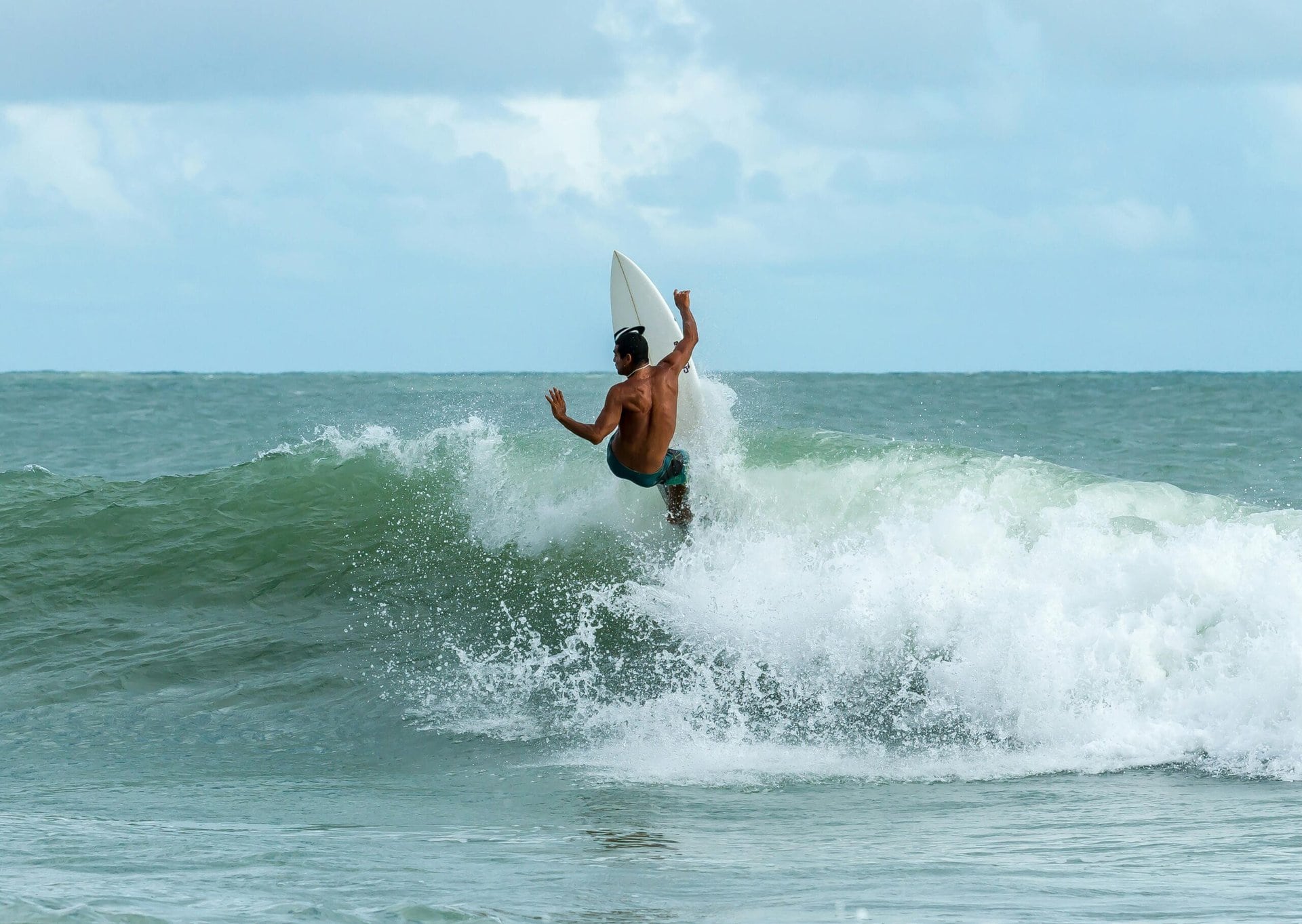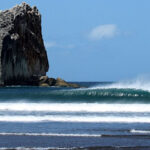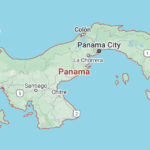At Safari Surf School, we host surf travelers of every level, from total beginners to experienced chargers. No matter what level of surfer you are, we can help you improve, whether you’re a total novice who wants to catch your first wave or an advanced surfer looking to perfect your cutback. If you’re an intermediate or advanced surfer, a surf trip to Costa Rica is what you need to take your surfing to the next level. Read below for some of our favorite intermediate maneuvers in Intermediate Surf Maneuvers 101.
Intermediate Surf Maneuvers
Floaters
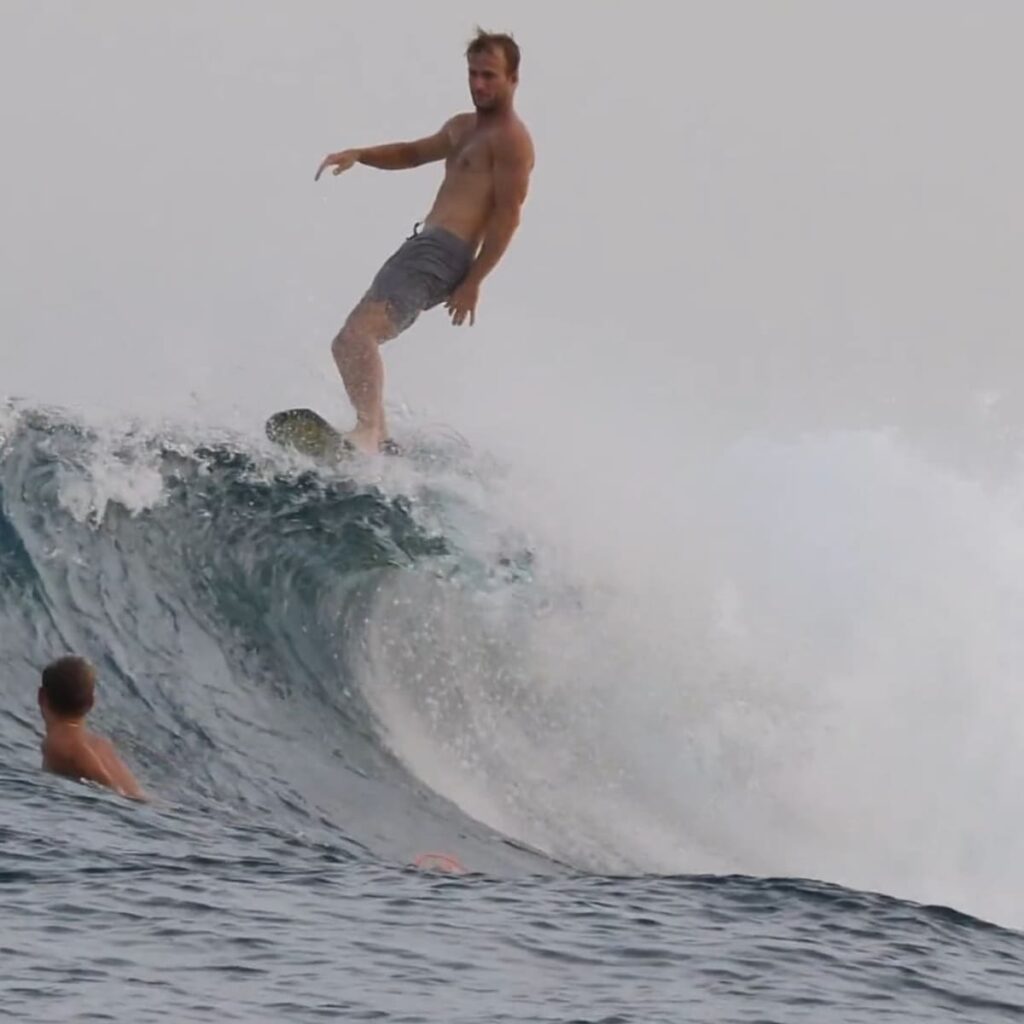
What is a Floater? A floater is an intermediate surf maneuver where the surfer rides over the top of a breaking wave. It’s a stylish move that requires timing, balance, and control.
How to Perform a Floater:
- Approach the Section: As you ride down the line, look for a section of the wave about to break.
- Bottom Turn: Perform a solid bottom turn to generate speed and angle your board towards the top of the wave.
- Ride Over the Lip: As you reach the lip, lift your board’s nose slightly and let the momentum carry you over the breaking wave.
- Stay Centered: Keep your weight centered over your board and your knees slightly bent to maintain balance.
- Re-enter the Wave: As you come down from the floater, guide your board back down into the wave and continue riding.
Tips for Success:
- Timing is crucial; aim to reach the lip just as it begins to break.
- Keep your eyes on the wave ahead to anticipate the next section.
Cutback
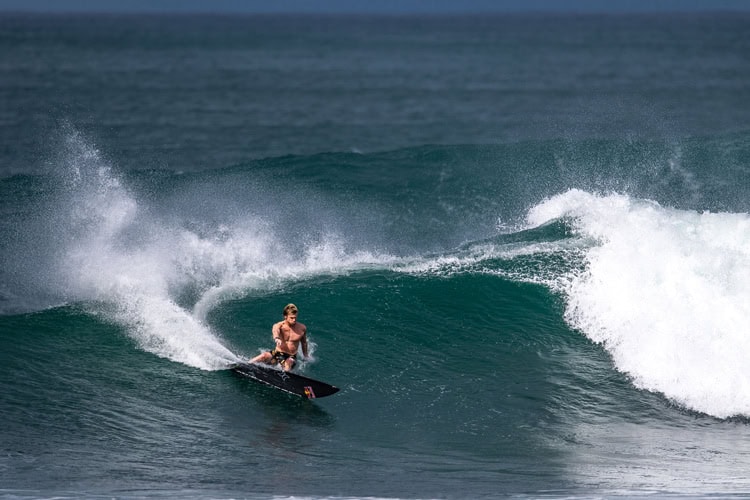
What is a Cutback? A cutback is an intermediate surf maneuver that allows a surfer to turn back toward the pocket of the wave.
How to Perform a Cutback:
- Generate Speed: Start by generating speed down the line with powerful pumps and bottom turns.
- Initiate the Turn: As you reach the open face of the wave, shift your weight onto your back foot and initiate the turn. Begin the turn by rotating your leading hand in the path of the turn, followed by your head / Gaze. In surfing, your head is essentially the steering wheel; your body will follow where you turn and look. Once your head turns, rotate your shoulders and then hips.
- Carve Back: Lean into the turn, using your shoulders and hips to guide the board through a smooth, arcing motion.
- Hit the Foam: Aim to hit the whitewater or the pocket of the wave, which helps to maintain momentum and sets you up for the next section.
- Re-engage the Rail: Shift your weight forward slightly and re-engage the rail to continue down the line.
Tips for Success:
- Initiate your turn with your leading hand.
- Use your arms to help guide and balance your turn.
- Focus on smooth, controlled movements rather than forcing the turn.
Snaps
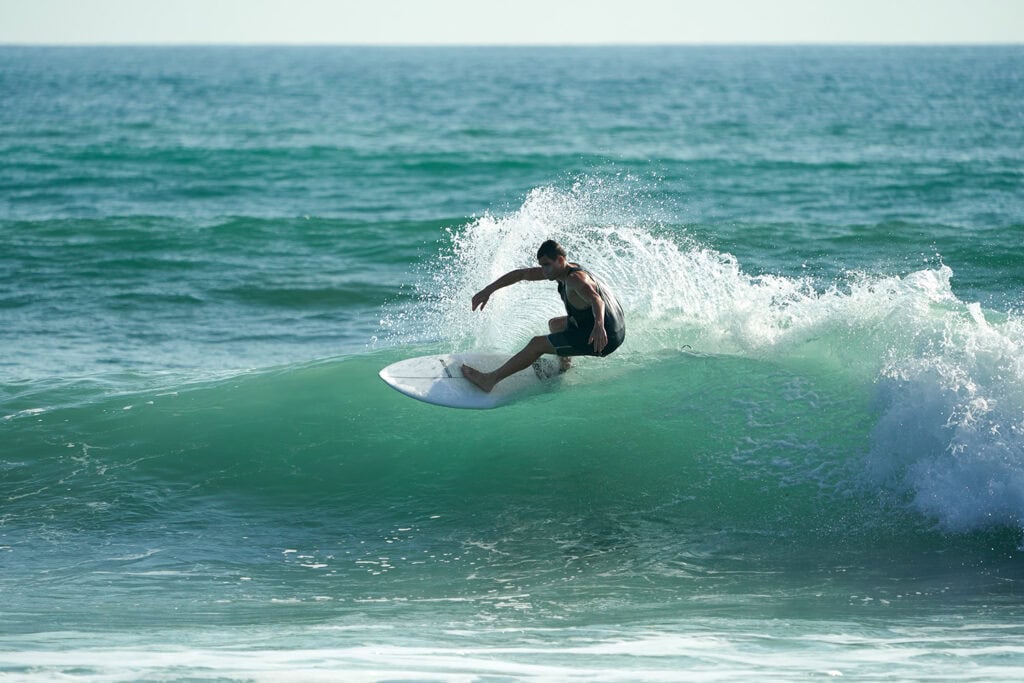
What is a Snap? A snap, or re-entry, is a quick, explosive turn off the top of the wave. It’s a dynamic intermediate surf maneuver that allows surfers to carry speed down the line.
How to Perform a Snap:
- Gain Speed: Generate speed down the line to set up for the snap.
- Coil Your Body: As you enter your bottom turn, pre-coil your body in anticipation of the approaching lip.
- Approach the Lip: Perform a bottom turn to angle your board towards the lip of the wave. As you come out of your bottom turn, immediately spot the section of the lip you aim to hit.
- Explosive Turn: As you rise up the wave, initiate your turn so you complete the turn when you reach the top of the wave. Quickly shift your weight onto your back foot and pivot the board sharply back towards the wave.
- Kick the Tail: At the peak of your turn, use your back foot to kick the tail of the board out and generate spray.
- Recover and Continue: Re-center your weight and guide your board back down the wave to continue your ride.
Tips for Success:
- Timing and speed are critical; aim to perform the snap at the steepest part of the wave.
- Keep your movements quick and precise to execute a clean snap.
Mastering advanced surf maneuvers like floaters, cutbacks, snaps, and more will improve your comfort and confidence in the water. Practice makes perfect, so spend time refining each maneuver, and don’t be afraid to push your limits. Nothing is better for your surfing than taking a surf trip and surfing every day. Head to our website to book your next surf trip.


